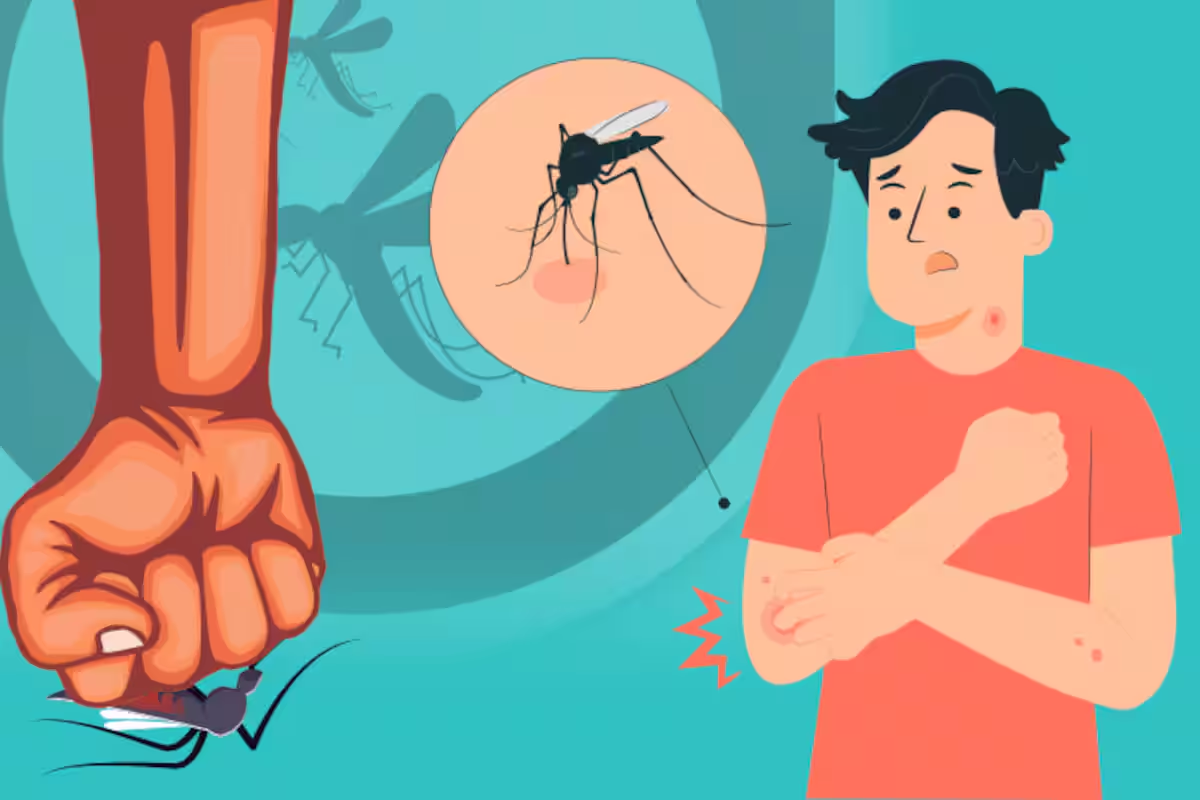Dengue fever, an illness transmitted by mosquitoes, which can lead to severe flu-like symptoms and potentially life-threatening complications, has recently surged in Ghana. As the number of cases rises, it’s crucial to stay informed and take preventive measures. This article explores the basics of dengue, its symptoms, prevention strategies and the importance of community action.
What is Dengue Fever?
Dengue fever, also known as break bone fever, is a viral infection transmitted to humans by the bite of an infected mosquito, particularly the Aedes mosquito. It is more common in tropical and subtropical climates, especially in urban and semi-urban areas.
Symptoms (Early Stage (1–3 days)
Dengue fever often presents with flu-like symptoms. Early recognition and timely medical intervention are crucial in managing dengue fever and preventing severe complications. If you suspect dengue fever, seek medical attention immediately.
A commonly observed symptom during the first few days after being bitten by an infected mosquito is marked by a sudden onset of high fever, often reaching up to 40°C. This marks the early stage of dengue fever. At this stage, patients may also experience severe headaches, intense pain behind the eyes, fatigue and weakness.
Mid Stage (3–7 Days)
As the infection progresses into the mid stage, typically from the third to seventh day, additional symptoms start to emerge. A skin rash may appear around the third or fourth day, resembling measles.
Nausea, vomiting and mild bleeding, such as nosebleeds or gum bleeding, are also common during this stage. Patients may experience a loss of appetite and fluctuating fever, where the fever may subside and then return.
Later stage (5 to 8+days)
In severe cases, the infection can progress to a critical stage known as severe dengue or dengue hemorrhagic fever, usually occurring from the fifth day onward. This stage is characterised by severe abdominal pain, persistent vomiting, and severe bleeding, such as from the nose, gums, or under the skin.
Others are plasma leakage that is fluid accumulation in the chest and abdomen, circulatory shock such as rapid weak pulse, cold clammy skin and restlessness.
Causes and Risk Factors
To prevent and control dengue fever, it is important to know what causes it and who is at risk. These causes and risk factors can be broadly categorised into environmental, demographic, socioeconomic and clinical factors.
Environmental factors play a pivotal role in the transmission of dengue fever. The presence of stagnant water around houses is perhaps the most significant risk factor, with studies showing it increases the odds of infection by nearly five times.
This is closely followed by the presence of flower pots and open water containers in homes, which provide ideal breeding grounds for Aedes mosquitoes, the primary vectors of dengue.
Other environmental risk factors include the presence of water pools and used car tires outdoors, which can collect rainwater and serve as mosquito breeding sites.
Demographic factors also contribute to the risk profile of dengue fever. Age is a significant factor, with individuals between 16 and 20 years old being at the highest risk. Interestingly, females appear to be more susceptible to infection than males.
Socioeconomic factors significantly influence the risk of dengue infection. Living in poor housing conditions, such as houses with inadequate protection against mosquitoes, increases vulnerability.
Previous exposure to dengue virus is a critical risk factor for severe dengue. Secondary dengue infections, where an individual is infected with a different variant of the virus than their first infection, carry a higher risk of developing severe complications.
Clinical factors become particularly relevant in predicting the severity of dengue infection. Specific symptoms such as headache, muscle and joint pain, vomiting, abdominal pain, diarrhoea and fatigue are associated with higher risk of severe dengue. For fatal outcomes, respiratory symptoms and age below 18 years have been identified as significant risk factors.
Prevention and Control Measures
Preventing and controlling dengue fever primarily involves avoiding mosquito bites and eliminating mosquito breeding sites. To avoid mosquito bites, it is important to use insecticide-treated bed nets, wear protective clothing and apply mosquito repellents.
These measures can significantly reduce the chances of being bitten by mosquitoes, especially during peak mosquito activity times.
Eliminating mosquito breeding sites is crucial because mosquitoes need water to breed. To achieve this, it is essential to remove any sources of standing water from your home and surrounding areas.
Covering water storage containers and removing stagnant water around homes can prevent mosquitoes from laying eggs. Properly disposing of items that can collect water, such as tires and bottles, is also important to minimise breeding grounds.
Enhancing environmental hygiene further contributes to mosquito control. Covering drains and gutters and maintaining clean surroundings can help reduce the risk of mosquito breeding and, consequently, the transmission of dengue fever.
Dengvaxia is a vaccine available in some countries, recommended only for those with a confirmed previous dengue infection.
What to do if you suspect Dengue Fever
If you are experiencing symptoms, seek medical attention immediately. A healthcare professional can diagnose dengue fever with a blood test and provide guidance on treatment.
There is no specific treatment for dengue fever, but rest, hydration and pain relief medication can help manage symptoms. In severe cases, hospitalisation may be necessary to monitor and treat complications.
Stay Safe!
By staying informed and taking the necessary steps to prevent dengue fever, we can work together to reduce the spread of this viral illness. Remember, early detection and proper medical care are crucial in managing this disease effectively.
The writer is a Russian trained Medical Doctor.


